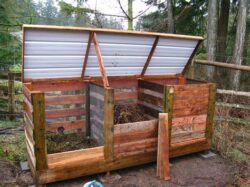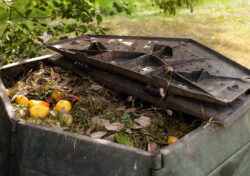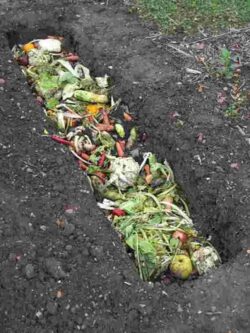Gardening is a year around exercise. Even when the garden is dormant, you need to be thinking about next year’s crop. This begins with dirt!
Hopefully you are composting your kitchen waste and other organic waste. These nutrients are priceless when growing dirt. Adding compost to the garden can produce 2 inches of soil a tear!
You can make an enclosed composter from old wooden pallets or barrels. Commercial composters are also great value. Figure out 6 months for rotting for the organics to work their magic. Next year’s garden will have more nutrients and looser soil that invites roots.
In the Fall, I dug trenches in my garden and loaded them up with lawn mulch and leaves. I then covered them over for their winter nap. The soil blanket will protect the tiny critters that break down the material. Currently the gardens are covered in snow. As snow melts, the composting will accelerate. When I aerate the garden in the Spring, the soil is looser and full of natural nutrients. You can identify a healthy soil by the number of worms that thrive in the soil.
If you spread a ton of soil over one acre, it would only be the thickness of a dime. Soil also becomes more compacted due to time, gravity, and non-use. It is good to aerate your soil routinely to allow moisture and air to be absorbed. Lawns produce great potential organics, but many lawn owners bag up clippings and throw them away. Making a corner mulch area could allow them to create soil that they could spread back into the yard annually. Using a mulching mower blade instantly chops up the grass and begins the mulching process in the yard. Over time, you grow more soil. This saves time and money.
If you are not sure what to do, get the “dirt” from a local county or state agency. Soil testing and consultations are often free, and they will come to you.
Get Dirty!
Montana Grant